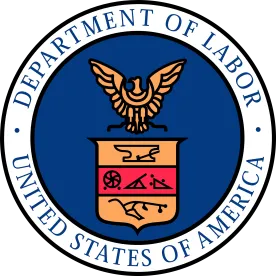In this episode of The Proskauer Brief, senior counsel Harris Mufson and partner Allan Bloom discuss recent developments in federal overtime rules. The Trump administration recently released its fall 2018 regulatory agenda, with lots of information relating to the Department of Labor (DOL). The DOL appears to be committed to a more business-friendly regulatory framework which limits the burdens that regulations place on employers. Be sure to tune in to learn about proposed new overtime rules and their impact on employers and their employees.
Harris Mufson: Hello and welcome to the Proskauer Brief: Hot Topics on Labor and Employment Law. I’m Harris Mufson, and on today’s episode I’m joined by Allan Bloom, and we’re going to discuss some recent developments in federal overtime rules. So Allan, what’s going on?
Allan Bloom: Harris, the Trump Administration has released its fall 2018 regulatory agenda. That’s the report that comes out twice a year from the federal administrative agencies. It lays out their plans and their priorities that they intend to focus on in the near term and the long term. Lots of juicy information in there, and today we’ll focus on the Department of Labor, and specifically the wage and hour division.
As an overall matter, the DOL appears to be committed to a more business-friendly regulatory framework, as we all expected from the Trump administration. In its plan, it says that it will work with employers and employees to meet their needs in a helpful manner with a minimum of rule-making. It says it will also look to limit the burdens that regulations place on employers.
And notably, it says that where Congress is silent, the Department of Labor does not have the authority to write the law. That’s an interesting statement, and an obvious jab at prior administrations, whose federal agencies have issued rules and guidance that some people think have gone a lot farther than the actual statutes that Congress has passed, and often at an increased cost and burden to employers.
Harris Mufson: So I know employers are interested, certainly interested in these new rules and regulations. Can you talk a little bit about what specifically is the regulatory plan for the wage and hour division?
Allan Bloom: So first off, we have a proposed new overtime rule. You might remember that the Obama administration had finalized changes to the overtime rules back in 2016 that would have raised the minimum salary for exemption from $23,600.00 and change, to close to $48,000.00 a year. Employers went nuts, and days before that new rule was going to take effect, a federal court in Texas declared it invalid nationwide.
Then President Trump took office in January of 2017, and the overtime rule was taken off the table. Well, now it’s back on the table, and the DOL says it will issue a new proposed overtime rule in March 2019. Alexander Acosta, the Secretary of Labor in the Trump administration, has said a number of times that he will support an increase in the minimum salary for exemption, which has only been raised twice in the last 43 years. The last time was 2004.
But it won’t be to $48,000.00. I expect a proposed increase to something in the low $30,000.00 range. Once that proposed rule comes out next year, the public will have a few months to submit comments, as is the case, always, with rule-making that’s done on notice, and I don’t think we’ll see a final rule until sometime in late 2019.
Once that final rule comes out, I expect the DOL will give employers a good deal of lead time to implement the changes, so figure the new rule will be effective some time in 2020.
Harris Mufson: So does that mean that it is likely that we are going to see some increase in the minimum salary required to be paid to certain employees to classify them as exempt from overtime regulations, meaning that employers do not have to pay those employees who are exempt time and a half for hours worked over 40 hours in a week?
Allan Bloom: That’s right. In order to be exempt from those overtime rules, employees need to qualify for one or more exemptions, and the ones at issue here are the executive exemption, the administrative exemption, and the professional exemption. In order to avoid paying overtime to those kinds of employees, they have to receive a minimum salary on a weekly basis. So the question has always been, what is that salary? And it’s been at $23,660.00, or $455.00 a week, since 2004.
Harris Mufson: Are there any state laws, then, that impact the minimum salary exemption for these overtime laws?
Allan Bloom: There are. And this new federal rule will not affect employers and states that already have a state minimum salary for exemption that is higher than federal law, like New York, and like California. In New York, for example, exempt administrative and executive employees have to be paid $58,500.00 a year starting on December 31st, 2018. So that’s $1,125.00 a week if you’re an employer of 11 or more employees in New York City. The numbers go down a little bit as you get outside of New York City, but New York has always had a higher minimum salary than federal law.
Harris Mufson: Anything else to note, of particular note in the proposed regulations?
Allan Bloom: Two other things jumped out at me. First the DOL is going to issue a proposed new rule on the regular rate of pay in December 2018. The regular rate of pay is what’s used to calculate overtime pay for non-exempt employees. The rules are complex, they’re quite old, and in the view of the DOL, they don’t really address the changes in compensation practices over the last few decades, and the more modern forms of compensation and benefits. Again, the point here seems to be to provide employers with more clarity, more guidance, and more flexibility in their approach to compensation. The DOL also thinks that the proposed changes will facilitate more compliance with the FLSA, and also reduce litigation around overtime pay calculations. So that’s all good news for employers.
Second, the DOL has announced a proposal to update the rules around joint employment, those situations where a worker is considered to be an employee of two or more employers jointly. This was a very hot button issue under the Obama Administration. Back in 2016 the DOL issued guidance on joint employment. It took a more expansive view of what constitutes an employment relationship than it had in the past. When President Trump took office, the DOL withdrew that guidance in 2017.
And now we’re likely to see a new joint employer rule that I think will be more business-friendly, more reflective of modern business realities, where workers often provide services or value directly or indirectly to businesses that are not their actual employer. So think about an employee of a staffing agency who provides services to a client of that agency. The question is whether that worker can look only to the agency for purposes of getting paid, or whether he can look to both the agency, or the client.
Same issue with an employee of a franchisee, or a subsidiary. Should that employee be able to sue the franchisor or the parent company for wages, or does she just have to look to her actual employer of record, the franchisee, the subsidiary. That’s the issue around joint employment, and a number of businesses around the county will be paying close attention to this issue.
Harris Mufson: I think that’s definitely the case. I know employers are very interested, will be very interested in seeing what the final regulations are concerning these wage and hour issues, and we’ll continue to report on these developments as they occur. Our listeners also can check out our Proskauer Wage and Hour blog for the latest updates, and thank you so much for joining us today on the Proskauer Brief. Stay tuned for more insights on the latest hot topics in labor and employment law, and be sure to follow us on iTunes.



 />i
/>i

